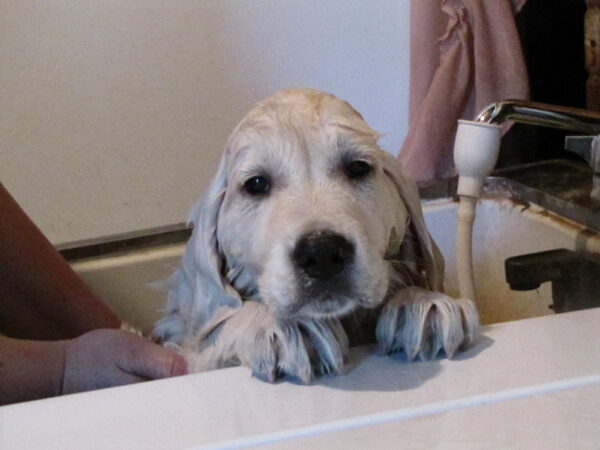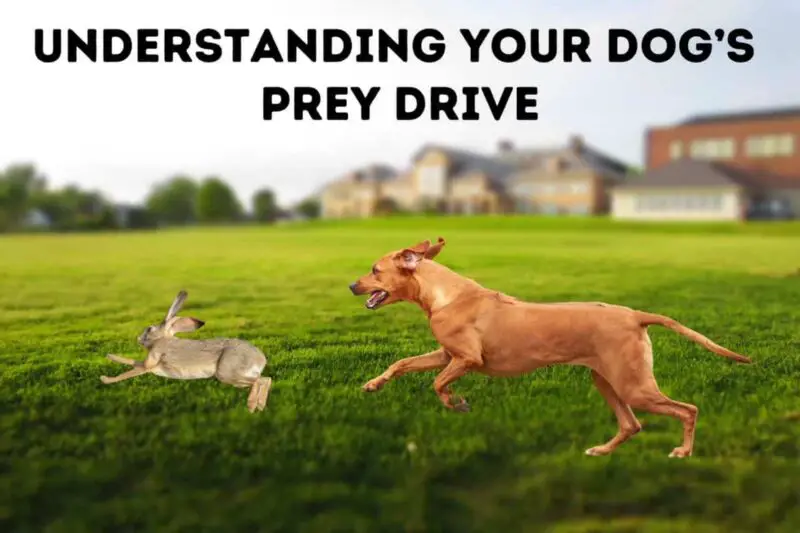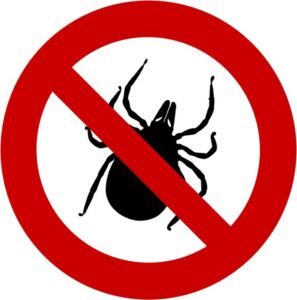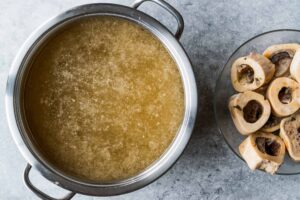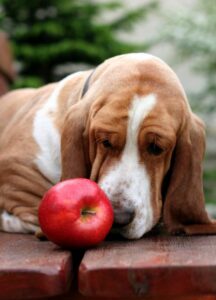Can You Use Baby Shampoo On Dogs? Dirty Dog Questions Answered
Your dog’s skin and hair are perfectly designed to help protect him from toxic substances, regulate his temperature and show off that gorgeous coat! Our job as pet parents is to help him stay healthy while we keep him looking and smelling his best.
So, can you use baby shampoo on your dirty dog?
In a pinch, you can use a low-fragrance baby shampoo when bathing your dog if you have no better alternative. It’s not the worst thing you can use, but it’s also not the best.
We will recommend the best (and worst) shampoos for your dog plus give you the scoop on:
- dish detergent
- human shampoos
- dog and puppy shampoos
- castille soap
- vinegar and water
- waterless/dry shampoos
- sensitive skin shampoos
- removing skunk odour
- medicated dog shampoos and yes…
- baby shampoo
Let’s start with looking at your dog’s skin and hair.
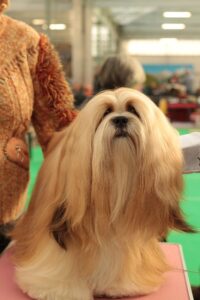
A Dog’s Skin and Hair
Skin
Your dog’s skin is the largest organ of his body. It protects against the environment, regulates temperature, keeps nutrients in, supports immunity and allows your dog to experience his exquisite sense of touch. Depending on the species and age, the skin may compose 12 to 24% of your dog’s body weight.
Your Dog’s Skin has 3 Major Layers:
- Epidermis (outermost layer) proves the top layer of protection and contains several types of cells. This layer helps with immunity, keeps nutrients in and toxic substances out, protects from sunlight, colours the skin and hair and provides sensory information.
- Dermis (middle layer) contains blood vessels, oil and sweat glands, hair follicles, claws and immune cells. This layer supplies the top layer of skin with nutrients, and regulates skin and body temperature.
- Subcutis (innermost layer) contains subcutaneous fat and muscles (including a twitch muscle). This layer provides insulation, holds fluids, electrolytes and energy and acts as a shock absorber.
Each layer of skin plays a vital role in your dog’s health.
How Does your Dog’s Skin Protect His Health?
A dog’s skin does some amazing work, which is why it’s so important to keep this brilliant organ in tip top shape with the right shampoo.
There are so many ways your dog’s skin protects his health:
- keeps bacteria balanced to prevent skin problems
- eliminates toxins & keeps out harmful substances
- keeps in fluids, salt and nutrients
- protects from the sun’s ultraviolet rays
- responds as part of the immune system (usually with rashes, inflammation or sores)
- helps him receive sensory information from whiskers and deep skin areas
- carries a rich blood supply of nutrients
- regulates skin and body temperature
- produces collagen to boost skin integrity
- secretes pheromones to give dogs vital information and a sense of security
- supports appendages like hair and claws
Health Conditions Can Show Up in Your Dog’s Skin
The skin is one of the first organs to show signs of allergies, poor nutrition, disease and poor liver function.
Although canine skin cells turn over more quickly than human cells (every 20 days compared to 28 days), the rate is affected by nutrition, hormones, genetics, excessive sunlight and some anti-inflammatory drugs.
pH Balance
pH levels tell us about the chemistry of a substance, specifically how acidic, neutral or alkaline a substance is. The pH scale ranges from zero to fourteen with seven being neutral (the pH of pure water). The lower the number, the more acidic the substance. The higher the number, the more alkaline a substance is.
What Does pH Have to Do With Dogs and Shampoos?
Skin and body fluids, water, chemicals and shampoos all have a pH value that help them work best.
For example, if you have a swimming pool, you must test the pH regularly to keep it within a certain level that’s safe to swim in. If it goes too acidic, the water can corrode pool equipment, damage surfaces and irritate skin, eyes and noses. Let your pool go too alkaline, and you get cloudy water that eats away at bathing suits and creates room for bacteria and algae.
Shampoo products that are too acidic or too alkaline can also do damage to the skin, causing chemical burns, inflammation and lowered resistance to bacterial infections.
Although it is generally agreed that canine skin is more alkaline (higher pH level) than human skin, there is no single agreed upon pH number or specific range. Consensus suggests a pH around 7.3-7.9 however, a confusing array of studies can have you spinning about pH levels.
The Bottom Line About pH
Overall, research suggests dogs are somewhat more alkaline as compared with humans. It also suggests that some skin infections grow more or less rapidly depending on the pH of the skin. Based on this, we are encouraged to use shampoo products with a somewhat higher alkaline, and only use acidic products for occasional therapeutic purposes.
“For regular bathing, use a slightly alkaline shampoo. Only use acidic products occasionally for specific therapeutic purposes.”
The bottom line is, for regular home grooming, you should keep your dog’s shampoo around 7 or slightly higher. However, a highly cited study argues that pH is not the most important consideration in dog shampoo and goes on to list the wide range of pH levels in 60 dog and human shampoos (Bird, 2011). Read this for more information about pH levels in common shampoos.
The Hair of the Dog
No, we’re not talking about the folk remedy for treating a hangover!
Your dog’s hair is his crowning glory, but also serves a function.
The hair coat:
- protects the skin from physical and ultraviolet light damage
- helps regulate body temperature
- responds to seasonal temperature changes. The cold-weather coat of many dogs is longer and finer to trap heat. The warm-weather coat has shorter, thicker hairs and fewer secondary hairs to encourage air flow and cooling.
- is built on a single central hair surrounded by 3 to 15 smaller secondary hairs all exiting from one pore.
“A dog’s coat adapts to warmer weather naturally through a warm-weather coat and cooling off by panting and drooling. Shaving a dog’s coat to keep them cool is unnecessary and potentially harmful.”
Healthy hair depends on oil glands that secrete a fatty substance called sebum into the hair follicles and onto the skin. Oil glands are clustered near the paws, back of the neck, rump, chin, and tail. Sebum keeps skin soft, moist, and pliable and gives the hair coat sheen. It also has antibiotic properties.
Finally, hair growth is affected by nutrition, hormones, and change of season. Drugs, disease and environment also affect the health of hair.
Do Puppies Have Different Skin & Hair than Adult Dogs?
Yes, Puppies hair and skin are different then adult dogs.
Puppies are born with a soft, fluffy coat of hair and singular hair follicles, which develop 3-15 more hair follicles as they grow. Hair grows thicker and stiffer as they attain their adult coat. Double coated dogs also develop their second coat as they grow.
The skin’s lubricating glands are less active in puppies which can lead to dryness, more dandruff and flaking skin.
See our article on how to bathe your puppy, here.
Shampoos
A dog’s wide range of protective cells, nutrients and oils naturally protect his skin and hair. But sometimes, his natural state can be a little dirtier and smellier than we’d like! How do we help keep our Fur Souls clean so those cuddles are even more enjoyable?
Whether you go to a groomer, or rub a dub dub in your own tub, we like to keep our Fur Souls fresh, clean and smelling good. But what’s in those shampoos?
What’s In Shampoos?
Let’s start with some common ingredients in regular shampoo intended for adult humans.
Human Shampoo on Dogs
Developed to be more acidic, smelling fabulous and appealing to a whole lot of different desired hair looks, regular shampoos for adults can contain a lot of chemicals – with some concerning effects.
A few common chemicals in shampoos include:
- parabens
- sulfates
- propylene glycol
- diethanolamine (DEA)
These chemicals are used to:
- preserve the shampoo
- create a rich lather
- add fragrance
Known side effects include:
- skin, eye, respiratory irritation
- rashes, inflammation and allergic reactions
- hormone disruption
- liver abnormalities and kidney damage
- bladder, esophagus, liver and stomach cancer
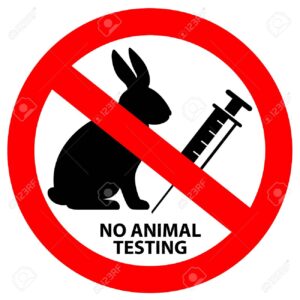
In addition to containing rampant chemicals, many shampoos are tested on animals. Please choose your health and beauty products carefully and make a stand by supporting cruelty-free companies.
Healthy Hint: If you’re looking for safer shampoo for yourself, check out one of our favourite apps, “Think Dirty”. This app rates beauty and household products for safety and environmental kindness. The last time we checked, it even listed a few dog shampoos.
Can I Use Human Shampoo on My Dog?
No, do not use human shampoo on dogs. Shampoo formulated for adult humans is one of the worst things you could put on your dog. Don’t expose your tender Fur Baby to these rampant and harmful chemicals, fragrances and acidic pH levels.
Baby Shampoo
Many pet parents believe that baby shampoo is so gentle that it’s perfect for dogs and puppies.
Unless it’s absolutely necessary in a pinch, we don’t recommend baby shampoos. Here’s why:
Although baby shampoos are made with fewer harmful chemicals and fragrances than regular human shampoo, ingredients in popular baby shampoos (like Johnson & Johnson) still contain possible carcinogens and fragrances that can worsen respiratory illnesses like asthma, and cause skin irritation.
Baby shampoos are designed for the more acidic skin of babies, not dogs.
Baby shampoos that are unscented and clear are better than those with added colours or fragrances. If you do need to use baby shampoo on your dog, ensure that you rinse him thoroughly to ensure that you get all of it out when the scrubbing part is done.
The bottom line on baby shampoo is that, although it’s a better choice than adult shampoos, it’s still worse than a shampoo specifically formulated for dogs.
Can I Use Baby Shampoo on my Puppy?
Puppies have different skin, hair and sensitivities than adult dogs. Baby shampoo is formulated for the pH of human babies, not dog babies – so only use baby shampoo in a pinch until you can get a proper shampoo formulated for puppies.
If you don’t have a shampoo formulated for puppies (or adult dogs), choose an unscented, clear baby shampoo. Just rinse very well. And shampoo your puppy less frequently than an adult dog.
Are shampoos formulated for dogs really necessary?
As a general rule, yes.
Dog shampoos should be formulated to return your dog’s pH balance to a healthy range that supports the many functions of his hair and skin.
Although research is limited, a highly cited study indicates the pH of dog shampoos should be 7.3.
However, when 60 dog shampoos were tested for pH, only one-third tested in the expected range of 7.0 or higher. That means, two-thirds of the sample tested had a pH of an acidic 6.5 or less.
The bottom line is, choosing a shampoo formulated for dogs gives you the best chance at a gentle, non-toxic and close to an appropriate pH level to support your dog’s skin and hair health.
Can I Use Dog Shampoo on my Puppy?
Puppy formulations are a bit different than those for adult dogs. They tend to be more gentle, more mild and address the special needs of puppies, like drier skin and developing hair.
A shampoo formulated for puppies is preferred to a regular dog shampoo,. However, it’s generally safe to use an adult dog formulation with puppy. Just choose something unscented and clear, rinse thoroughly and shampoo only when neccesary (don’t over-bathe). And never use medicated shampoos (like flea shampoos) on a puppy.
Dry/Waterless Shampoos for People
Although helpful if you’re running late for work, these in-between washes “shampoos” work by drying up natural oils, rather than cleansing. They may contain cancer-causing talc and clog pores on your scalp. They also contain butane, petroleum gas and are a no-no if you’re concerned about environmental damage from aerosols.
Can you use them on dogs? That’s a hard no.
Dry/Waterless Shampoo for Dogs
Dry shampoos for dogs work the same way they do for people. Talcs, foams, aerosols and sprays simply absorb oils (not dirt) and trap dirt in the hair and skin. Don’t think they’re any less dangerous, as most contain cancer-causing chemicals.
Now, in an absolute pinch where you need to buy yourself a couple of days before giving your pooch a water and soap bath, you can use a dry shampoo from natural ingredients. But remember, while these products are on, they are clogging pores, affecting the skin’s ability to fight bacteria, potentially stunting hair growth and holding in toxins.
If you need to fluff an oily coat in a jiffy, and plan to bathe your pooch in the next day or two, you can lightly dust cornstarch on his coat, avoiding eyes, nose and mouth. If he’s sensitive to corn, don’t use this.
Can I Spray my Dog with Vinegar and Water?
No! Your dog is not a window.
Vinegar is acidic and may upset the pH balance of your dog or cause pain in open sores. The only exception to using vinegar is in certain medicinal formulas developed to help heal infections.
Water and soap are the only way to cleanse the skin, remove oily buildup and keep follicles clean and unblocked.
Castille Soap
Castille soap is an all-natural, lye-based soap that comes in liquid and solid forms. Castille soap is not recommended for dogs in its pure form due to a too-high alkaline pH. Although some people attempt to lower the pH by adding vinegar and glycerin/oil, the science is still out. In fact, an informal trial by a biochemist found that it was difficult to alter the chemistry significantly enough to lower the pH. And we don’t want our dogs involved in a complicated chemistry experiment! So, if a castille-based soap is formulated specially for dogs, it could be a great option. If it’s not, better avoid this.
Dish Soap
Dish soap is not made for dogs or humans. It’s made for dishes! The ingredients in dish soap are strong enough to cut through grease and loosen caked-on messes.

Because your dog isn’t a dirty dish, those ingredients can cause significant irritation – especially dogs with delicate skin. Veterinary assessments confirm that dish soap can cause dermatological issues, leading to skin damage, scratching and more skin damage.
Research has shown us that daily use of Dawn dish soap for heavily contaminated search and rescue dogs resulted in mild to moderate skin irritation starting at an average of 4.9 days (Mabry, 2015; Gordon, 2015).
And yes, Dawn contains artificial fragrances, dyes, sulphates and the ominous sounding PPG-26-Buteth-26, a substance based in butyl alcohol and currently unregulated in the US and China.
To be safe, stay away from using any dish washing detergents with your precious dogs – keep detergents in your sink with those dirty dishes.
Medicated Shampoos
Flea Shampoos
If your friendly dog has brought some friends home with him (i.e. fleas), you may rush to a medicated flea bath or Dawn dish detergent. We have a better solution.
Flea baths are meant to kill pests. A common ingredient in flea and tick shampoos is permethrin, a synthetic pesticide that is a known neurotoxin and possible carcinogen. There have been reports of dogs experiencing muscle weakness, vomiting and diarrhea, seizures, tumours, cancers and chronic skin irritation after using medicated flea products. In most cases, there are safer ways to say good-bye to fleas.
Dawn Dish Soap for Fleas
Dawn is known for its ability to kill fleas. But we’ll let you in on a little secret – all shampoos kill fleas! They do this through drowning them. Fleas have exoskeletons that allow them to float in water, Dawn (and most other soaps and shampoos) creates a kind of surfactant, or surface tension, that compromises the exoskeleton and essentially drowns the fleas. What makes Dawn a poor choice is when your dog’s skin is already irritated from having number of fleas on his skin, using a harsh detergent can worsen his skin and cause more damage. Shampooing won’t prevent flea infestations though, and won’t prevent new fleas from hopping right back on little Buddy.
If you suspect your dogs has fleas, an effective, safe (and slightly messy) treatment is food grade diatomaceous earth (DE). Dust DE over your dog’s coat (do this outside – you’ll see why!) to dry out and kill fleas safely. Once fleas are gone, add a few drops of turmeric oil to a gentle shampoo formulated for dogs to provide added protection from ticks and fleas. There are many safer, natural flea and tick solutions available.
How to Get Rid of Skunk Smell on a Dog
Skunk (Odour-Reducing) Shampoos

Your curious dog has decided to make friends with the local critters. Unfortunately, the skunk wants to be left alone. We’ve had this happen a few times when letting our dogs out in the middle of the night for a tinkle, or when out camping. Here’s what you need to know.
Never use water as the first step in removing skunk odour from a dog.
Skunk spray contains oils which, when mixed with water, simply spread the odour. This is why it’s important to never use water as the first step in de-odourizing your dog.
This is the only time we recommend using Dawn dish detergent along with hydrogen peroxide and baking soda as a first wash. Here’s the recipe.
Important! Do not use water, tomato juice or anything else before this step.
Start with a stinky, skunky dog – stay calm and remember, this will be a funny story tomorrow.
Skunk Smell Eliminator (homemade skunk shampoo)
1/4 cup baking soda
2 tsp Dawn dish detergent liquid
4 cups hydrogen peroxide (no higher than 3%)
- Mix all ingredients together into a paste.
- Using your hands (wear gloves if possible), massage the paste into your dog’s fur, avoiding his nose and eyes.
- Leave mixture on for 5 minutes. You should notice the smell disappearing. If it doesn’t get a bit better within 5 minutes, leave on up to 15 minutes or mix up more paste and apply to areas you may have missed.
- After 15 minutes, rinse off the paste with water.
- Then shampoo with regular dog shampoo and rinse very well.
Hints:
- This mixture may bleach the colour of dark-haired dogs. If your dog has dark hair, keep mixture on less than 5 minutes.
- The mix is flammable, so keep the dog away from flames and don’t smoke near him.
- Do not allow your dog to lick the mixture – he could vomit.
- Don’t make up this mixture ahead of time and store it – it can become volatile and explode.
- Use gloves when applying this mixture.
You may repeat this process every couple of days until the odour is completely gone. Only after the odour is gone can you add a dog conditioner to his coat, as the mixture will dry out his hair and skin.
As for general odour-reducing formulas, we like dog shampoo that’s simply clean and fragrance-free. Many advertised skunk shampoos contain “proprietary” ingredients (meaning they don’t have to list them) and synthetic fragrances. Avoid all artificial fragrances, which can irritate your dog’s eyes and skin and potentially cause harm in the long term. Remember, if you can smell it, your dog is experiencing it hundreds of times stronger – and can’t escape it.
Instead, look for products that contain small amounts of pure organic essential oils, like chamomile, cedar wood, geranium, sweet marjoram, myrrh, sweet orange, lavender, eucalyptus, rose or thyme.
Alternatively, use a fragrance-free dog shampoo and make a gentle fragranced flea and tick spritz to apply afterward.
Hypoallergenic Dog Shampoo for Sensitive Skin (Anti-Itch)
If your dog already has sensitive skin, research suggests an oatmeal-based shampoo formulated for dogs can help (Gordon, 2015).
We love this oatmeal bath recipe you can make at home!
What is the Cost Difference Among Different Shampoos?
Although most of us don’t have an unlimited budget, don’t compromise on your dog’s tender skin. After all, his skin is key to his overall health, immunity and protection. Using cheap, poor quality products from countries with unregulated use of chemicals is simply not the way to health. And by now you know that chemical, fragrances, unfavourable pH and frequent bathing are going to take a toll on your beautiful Fur Soul.
If you’re still deciding about baby shampoo versus shampoo formulated for dogs, you could expect about a $5 to $10 difference in a regular size bottle. However if you are using the wrong shampoo, you can also expect to spend quite a bit of money at the vet to manage skin problems that could have been avoided with the right shampoo.
How Often Should I Shampoo My Dog?
You don’t want to wash your pooch too frequently, regardless of what kind of shampoo you’re using. This will strip the natural, beneficial oils from his coat. It also cause dry skin, causing it to itch. A bath every 3-4 months will be good enough for most dogs as long as you’re grooming them regularly and feeding a healthy, whole foods diet.
What About a Puppy?
You can begin to give your little guy a bath when he is about 3 months old.
Waiting a bit gives him a chance to develop healthy bacteria and oils that protect his tender, growing skin. We also want to avoid exposing him to any harsh chemicals and fragrances that are common in many shampoos. The good news is, you can prepare him by mimicking the bath experience with gentle massages and towel rub playtime! Hint: bring him to the bathing area and run the water, while playing with him and massaging to reduce stress when it comes to the real bath time!
How to Bathe A Puppy

Brush him well with a soft brush designed for puppy skin before you bathe him. Brush him regularly in between baths as well (aim for daily brushing). This will remove loose hair, dirt, debris and mats from his hair. The act of brushing also mimics the licking his doggy mom would use to keep him clean and calm.
Take things slowly. Give him lots of love, encouragement, introduce him gradually to the shower area and be patient. He first bath could take an hour or more. If he becomes stressed, stop, help him calm and then proceed.
Use warm water – never cold. Warm water relaxes muscles and keeps his body temperature stable. Cold water contracts muscles, making bath time stressful. Puppies also don’t have the protection from heat loss that adults have, so never use cold water or a garden hose. Gently wet him from his neck down to avoid getting water into his ears, eyes, nose and mouth. Massage the puppy shampoo into his coat and skin gently. Work your way from his neck back toward the tail, massaging him with your fingertips.
Wash his face gently with a facecloth, using two separate bowls of soapy water and clean water. Use a clear, unscented shampoo as your soapy dish. Dip the cloth into the soapy water and gently dab his face, avoiding eyes, nose and mouth. Rinse the cloth and dab with clean water until there is no residue left.
Rinse him from the neck down thoroughly with warm water from a shower spray hose or a plastic pitcher. Keep the water away from his eyes, nose and ears – moist ears can lead to infections.
Towel dry him the best you can before he wiggles out to shake the remaining water all over your walls. Offer praise and treats for good behavior throughout the bathing procedure. Make this a pleasurable experience for both of you. Use a dry facecloth to gently dab the inner ear flap and around the outer ear canal to dry this area. Don’t stick your finger in.
How Often Should I Shampoo My Puppy?
You should hold off on puppy’s first bath until he is about 3 months old. Giving puppies a bath every few months if they need it, otherwise a few times a year is usually sufficient, along with daily brushing and a healthy diet. If they get super dirty on a regular basis, a bath every 6 weeks should be fine.
The Best & Worst Shampoos to Use On Your Dog
Natural ingredients are the best. Avoid as many chemicals and fragrances as possible, and stick with shampoos that are slightly alkaline and formulated for dogs (or puppies). In a pinch, certain baby shampoos can be used. And, please be kind to all animals and spend your money on products that are never tested on animals.
Best Dog Shampoos
Burt’s Bees Dog Shampoo – fragrance-free, clean ingredients with no preparation needed. We love that Burt’s Bees contains natural honey, oats and honeysuckle, cleans thoroughly and is NEVER tested on animals.

Home Made Oat Bath – a completely safe, natural & inexpensive bath for sensitive skin. Requires a little preparation and can be slightly messy in the tub. Get the recipe here.
Earthbath Dog Shampoos – these are naturally derived, free of common chemicals, uses essential oils and are not tested on animals.
Burt’s Bees For Dogs: Itch Soothing Shampoo – we just love Burt and his bees. Enough said!
Best Puppy Shampoos
Better Burt’s Bees Baby Bee Tear Free Shampoo & Wash – one of the best of the baby shampoo options – if you have to use one.

Imagine Skincare Organics Happy Baby Care products (Happy Baby Hair & Body Shampoo, unscented). Cruelty-free. Our other favourite in the baby shampoo category.
Worst Baby Shampoos
Johnson & Johnson’s Natural Baby Shampoo – although the “natural” formula contains fewer chemicals than J & J’s regular baby shampoo version, it still contains synthetic fragrances. You have to dig a bit to find out that J&J tests their products on animals. We put this in the “worst” category for this reason and encourage you to take steps to advocate against companies and government regulations that support animal testing.
Aveeno’s Lightly Scented Baby Shampoo rates in a similar manner as Johnson and Johnson’s regular baby shampoo (probably because their parent company is J&J). The “lightly scented” version is safer than their regular scented version however, Aveeno – like J&J – is not cruelty-free.
Worst Dog Shampoos
Full disclosure – we haven’t tried several of the “worst” dog shampoos because, why would we put our dogs through that? The only one we’ve tried and don’t like is Wahl’s.
Wahl’s Dog Shampoo – inexpensive, no preparation needed, mostly clean ingredients – but the fragrance is too powerful – even the lightly scented kind. And yes, Wahl tests on animals.
Worst Shampoo Products
Dish Soap – A harsh product that can cause skin breakdown. However, it can be effective if used with other ingredients in the rare instance your dog is sprayed by a skunk. Dawn is owned by Procter & Gamble, which is not cruelty-free. Think twice next time you see a heart-warming ad where an oil-slicked bird is bathing in Dawn.
Adult Human Shampoo – Most are pH inappropriate for dogs, filled with chemicals and fragrances and many are tested on animals. Avoid these.
Scented Baby Shampoos e.g. Johnson & Johnson Baby Shampoo or Aveeno’s Baby Wash & Shampoo. Although these are more “clean” than most adult human shampoos, they still contain potentially harmful fragrances – and test on animals.
Dry Waterless Shampoos – Not a shampoo. These products strip oil but not dirt, clog pores and can make skin prone to bacterial infections.
Vinegar & Water – Don’t use an acid to clean your tender Fur Soul. It’s harmful unless used therapeutically for certain skin conditions or infections.
Medicated Shampoos – There is really no need for these shampoos, as many safer alternatives exist.
Bathe your Fur Soul as little as possible, but when you do, use a cruelty-free, unscented shampoo formulated for dogs – without unnecessary chemicals. And post your doggo bath-time photos – we can all use a smile!
Frequently Asked Questions (FAQ)
Will baby shampoo hurt a dog?
Baby shampoo is typically more acidic and appropriate for human skin – not dogs. It also frequently contains fragrance, colours and chemicals and can cause skin irritation or other reactions. It’s not the worst human shampoo, but not recommended unless it’s a dirty dog emergency – and rinse throughly after use.
What human shampoo can I use on my dog?
There isn’t a human shampoo that is recommended for dogs. In a pinch, you can use an unscented baby shampoo like the one from Burt’s Bees – just rinse your dog thoroughly (and ensure you have a bottle of high quality dog shampoo on hand for the next dirty dog fiasco!)
What happens if you use baby shampoo on a dog?
Baby shampoo may cause skin irritation, leading to scratching, sores and infections. Fragrances and added chemicals can irritate breathing problems or simply cause distress to a dog’s sensitive nose. If you’ve used baby shampoo, rinse your dog thoroughly with warm water.
Can I use Johnson & Johnson’s baby shampoo on my dog?
Not recommended. Although the “natural” formula contains fewer chemicals than J & J’s regular baby shampoo version, it still contains synthetic fragrances. J&J also tests their products on animals – and that’s not cool.
Can I use Aveeno baby shampoo on my dog?
Aveeno’s Lightly Scented Baby Shampoo rates in a similar manner as Johnson and Johnson’s regular baby shampoo (probably because their parent company is J&J). The “lightly scented” version is safer than their regular scented version however, Aveeno – like J&J – is not cruelty-free. Stick with a specially formulated, kind-to-critters, unscented dog shampoo like the one from Burt’s Bees.
Can you use Head & Shoulders on a dog?
No. Medicated shampoos are typically more acidic and can irritate a dog’s skin, resulting in a higher chance for skin damage and infections.
Be kind to all animals and the earth we share together.
References

